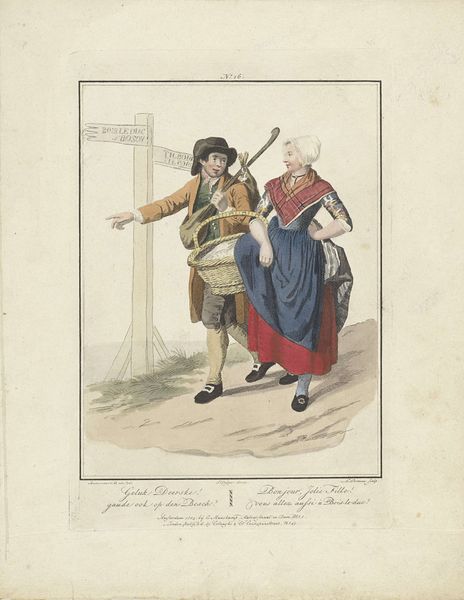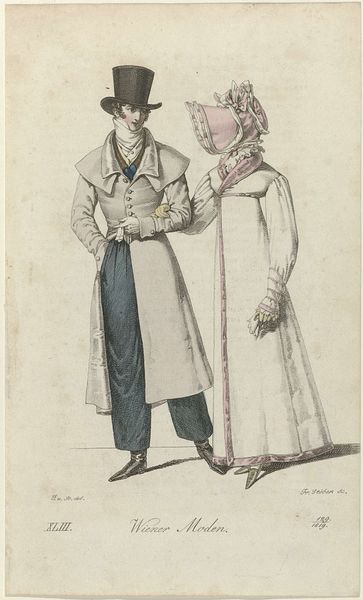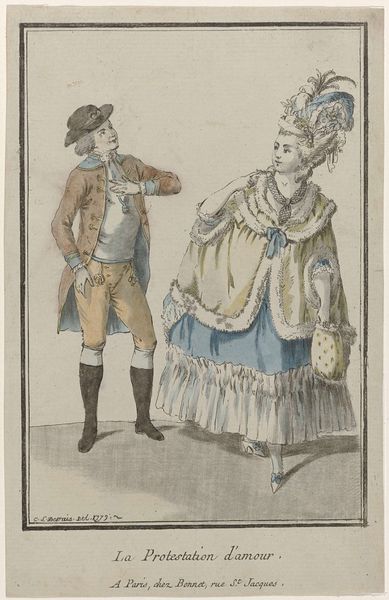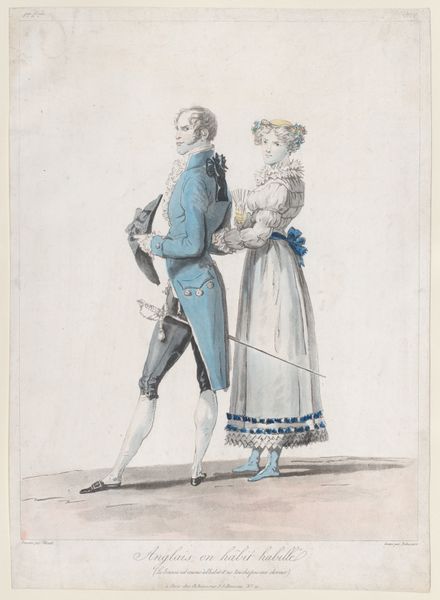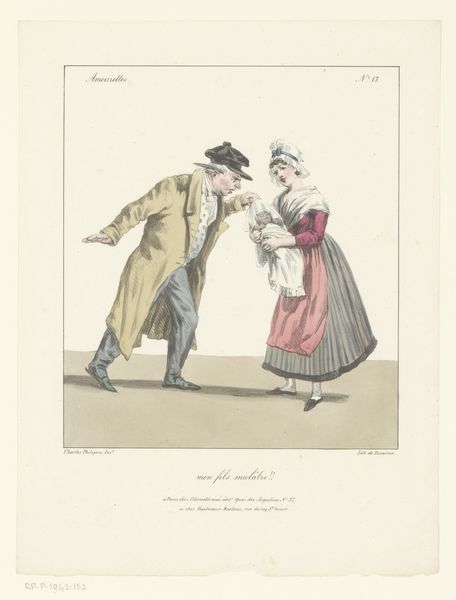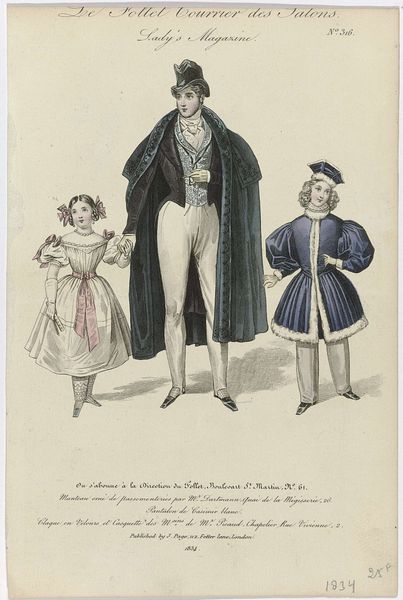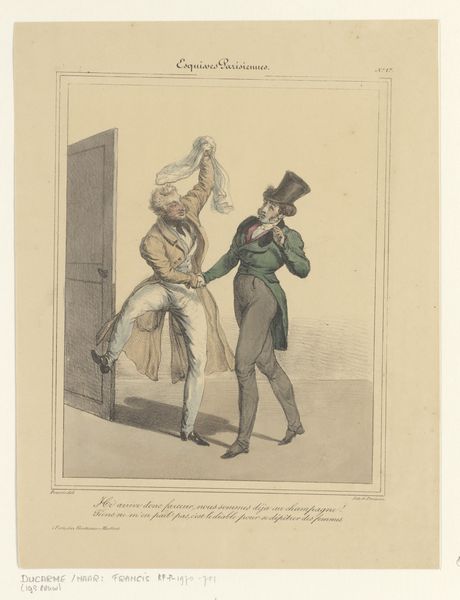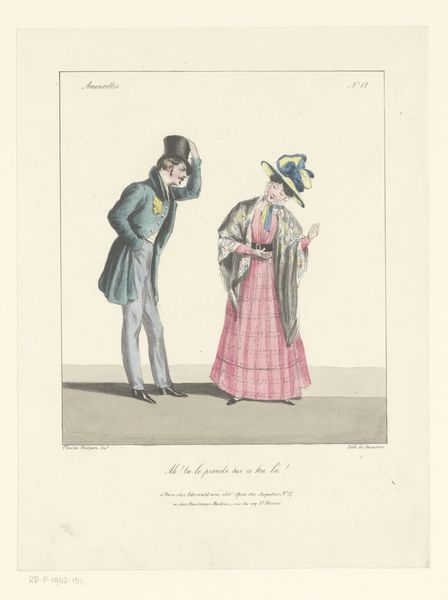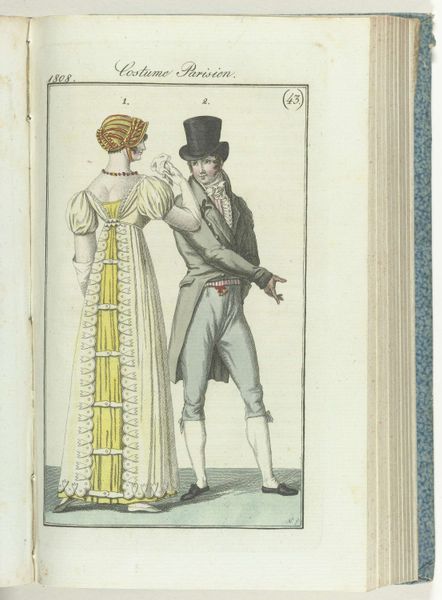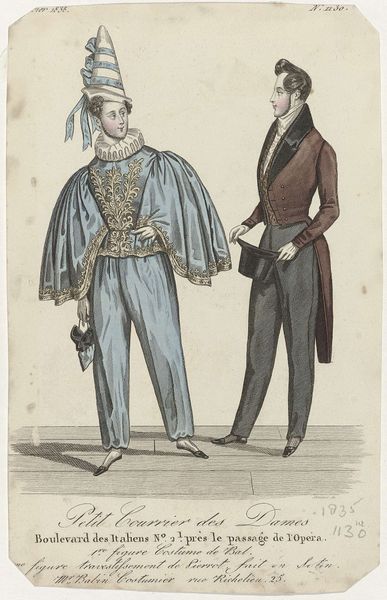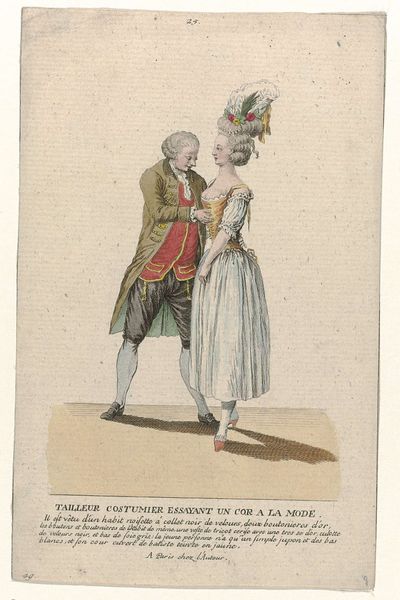
#
portrait
# print
#
historical fashion
#
romanticism
#
history-painting
Dimensions: height 268 mm, width 196 mm
Copyright: Rijks Museum: Open Domain
Curator: Standing before us is a print from around 1810-1812, its title hinting at cultural interplay: "French Gallantry, or English Charm". Though attributed to an anonymous hand, its historical significance is undeniable. Editor: It’s a strange pairing at first glance! I am immediately drawn to the sharp contrast in styles. The somber mood seems heightened by the leafless trees in the background, almost a commentary on the transience of fashion. Curator: The print encapsulates early 19th-century fashion, yet also represents broader social dialogues surrounding national identity and shifting power dynamics during the Napoleonic era. What can fashion tell us? Editor: Well, consider how dress served as a tool for distinguishing national and class identities. It visualizes power, and in that light I start reading it ironically: what claims is it making about charm or gallantry and what kind of performance is the French or English man putting on? Curator: Observe how this "French" silhouette champions lavish ornamentation while his presumed "English" counterpart adheres to tailored severity, favoring function. Even the artist juxtaposes ideals of the era through aesthetic difference. Editor: The print reminds us how clothing could be weaponized. The man's posture reads defensive and yet confident. Are those gloves green?! It’s hard not to perceive a loaded commentary here, almost like a sartorial showdown playing out. Curator: Precisely, and if we delve deeper into print culture during this time, pieces such as "French Gallantry, or English Charm," became potent tools to convey social commentary and contribute actively in these intercultural perceptions. Editor: In short, we must see the print as an intersectional marker! These figures exist not only within their moment but can offer critical lenses to view shifting relations of gender, race, and class then and now. Curator: Indeed, as we peel away aesthetic layers, we realize how an anonymous print functions as a powerful recorder. These fashion depictions help decode intercultural relations during complex geopolitical eras. Editor: This era truly understood fashion's influence, revealing the constant play of signifiers through clothing styles as an active way of constructing cultural norms.
Comments
rijksmuseum over 2 years ago
⋮
This couple is elegantly arrayed according to the style of around 1812. The strapping Frenchman wears the popular Carrick coat with a triple collar, along with a white cravat tied in a large knot. His form-fitting pantalons show off his athletic legs to their best advantage. The Englishwoman is aptly garbed in a redingote, a full-length coat of English origin, whose fabric is so fine that it moulds to every curve of her broad hips and heavy thighs.
Join the conversation
Join millions of artists and users on Artera today and experience the ultimate creative platform.
